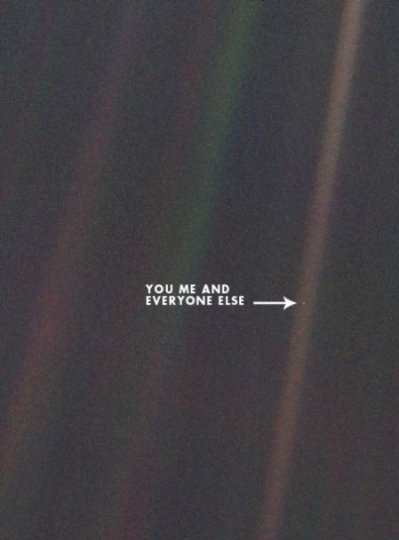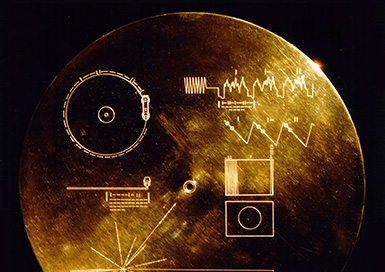A long belated hello RTU followers. I hope everybody had an enjoyable summer break, apologies for our considerable silence lately, as well as the occasional holiday I have been spending time preparing for my upcoming Master’s course while Joe has been busy with work and the plethora of other qualifications he does on the side. But back to the school year and back to the posts. Let’s brush off the cobwebs with one that isn’t very technical.
2017 marks the 40 year anniversary of the Voyager missions. The missions were originally conceived with the intention to explore Jupiter and Saturn and then onto, if successful, the further reaches of our solar system. The Voyager missions have become the success story of space missions, let’s recap their journey.

Way back in 1960s calculations revealed that, due to the alignment of the planets, it would be possible for a spacecraft launched in the late 1970s to visit all four of the outer giants in the solar system with an orbit that manipulated the gravity of each planet to swing the spacecraft round and on to the next. The technical term for this is a gravity assist, or a cooler term, a gravitational slingshot. And so the mission begins, seizing this opportunity which only comes roughly once every 200 years, truly a once in a lifetime chance.
The team at NASA decides to create two twin spacecrafts, Voyager 1 & 2 which are designed to take slightly different orbits. Voyager 2 is launched first on August 20 1977, followed 16 days later by Voyager 1 who receives the title of 1 because it will reach Jupiter and Saturn first. The Voyagers spend the next 20+ years travelling through the solar system sending back the most detailed images we have ever seen. On Jupiter for the first time we can see active volcanoes on the moons, understand that the Red Spot is a enormous cyclone-like storm and detect the presence of lightening. On Saturn we discover three more moons , come to learn that the largest moon Titan harbours a thick Earth-like atmosphere and we propel our understanding of the composition of the rings. And these are just the highlights. The main objective of the Voyager missions is a success, but these marathon runners are only just getting started…
After hurtling past Uranus and Neptune, encountering several new moons around each and sending back high resolution images of these icy worlds Voyager 1 gives us one of its most famous pieces in 1990. At a distance of 4 billion miles from the sun Voyager 1 takes the ‘Solar System Family Portrait’ a series of images that capture all the planets in orbit around the sun and the ‘Pale Blue Dot’ image, the image which captures the Earth suspended as a tiny speak in a sunbeam. This never seen before perspective inspires Carl Sagan, a leader behind the mission to write his piece on the humble nature of our planet and of all those that reside on it.

The Voyagers now continue to press outward and conduct studies of interplanetary space. In 1998 Voyager 1 became the farthest human-man object from Earth in space, going further than any craft has gone before. And the marathon journey just keeps on going. In 2004 Voyager crossed the barrier known as the ‘Termination Shock’ here the solar wind slowly down and heats up as it clashes with the interstellar wind. This new area of space in known as the Heliosheath and officially marks the end of the solar system. Then recently in 2012 Voyager 1 entered interstellar space, passing beyond the finally boundary known as the Heliopause – the boundary between our solar bubble and the matter ejected by explosions of other stars. (Soon to be followed by Voyager 2). The spacecraft continue to study ultraviolet sources amongst the stars in interstellar space and are still capable of sending this data back to Earth. In 2013 the first measurement of the density of the interstellar medium was made when an ‘explosion’ from the sun causes waves to ripple outward, creating a ripple in the plasma of interstellar space.

As well as the collection of data and measurements, the Voyagers have another important purpose, a purpose which may well never be fulfilled. They both contain a ‘Golden Record’ a 12-inch gold-plated copper disk, a beautiful artefact which plays the role of a kind of time capsule. The record would, if obtained by extraterrestrials, attempt to communicate the story of our world. It is contains a variety of images, natural sounds of earth, spoken greetings from languages, and music specifically curated to best attempt to display the diversity of life and culture on Earth. The ultimate message in a bottle.

At this moment in time Voyager 1 is 12,999,227,000 miles away from Earth, Voyager 2 is 10,728,140,000 miles away and they are both rack up miles every second – 330 million miles each year. It currently takes 19 hours for a light signal to be sent from Voyager 1 to Earth so safe to say communication isn’t easy. It is amazing to think that even with the 1970s hardware, 40 years on scientists can still communicate with the crafts but how much longer this will continue is uncertain. It is predicted communications will drop off between 2022-2025. However, it is not the growing distance that is the main problem. The issue is fuel supply, because the amount of fuel the crafts could be launched with was finite, eventually they will run out of juice and have to wander the galaxy alone, meaning we’ll no longer be able to locate, transmit or receive. The spaceships will go completely off the radar, but the distance they’ve got so far since 1977 without running out of fuel is remarkable!
So the Voyagers, the ultimate expectation exceeders, continue into their VIM phase (Voyager Interstellar Mission) 40 years on and still reach for the stars. Although we will soon loose communication with our old friends, they carry with them the human blueprint and the story of our pale blue dot into deep space, a story we hope one day may be found by another.

Reblogged this on Things I've read or intend to .
LikeLike
Mekhi is that you?? Long time no see! I don’t have the time to read now, but as soon as I can…
LikeLiked by 1 person
Yes sorry for the silence! Hope you’ve been well and look forward to your comments!
LikeLiked by 1 person
Very lovely post. It seems that the Voyagers were made with love and care. It is sad to see them go, maybe our children will hear from them again through Allen’s mouth 😏
LikeLiked by 1 person
Whenever you’ve got time, would you visit my blog? I’ve made lots of changes since last spring.
LikeLike
I had a little look now, the new template and new logo is looking great!
LikeLike
Reblogged this on Travels with Tio and commented:
I follow this blog to keep my thoughts about my self importance in perspective. Certainly the journeys of the two Voyagers propelled into infinity keeps me humble.
LikeLiked by 1 person
A great post to start my Saturday morning with ~ fantastic. The Voyager crafts still have me shaking my head at the level of quality, both in the machine that was made and the minds that create this adventure. Wonderful post.
LikeLiked by 1 person
How we become attached to our toys and imbue them with almost human status ; lossed in the wide blue yonder never to be recovered. I wonder if it is linked to our childhood cuddly bear that we keep in the attic and never seems the same through adult eyes. I supposed we all feel a bit childish when we look up at the vast night sky and realise we don’t live long enough to see any change.
Carl Satan loved the absolute insignificance of that pale blue dot and yet it could well contain the most complex thing in the galaxy: the human mind. Professor Brian Cox concluded we may well be alone in this galaxy when he analysed the problem.
The Brain is wider than the Sky
For put them side by side
The one the other will contain
With ease — and You — beside.
LikeLiked by 1 person